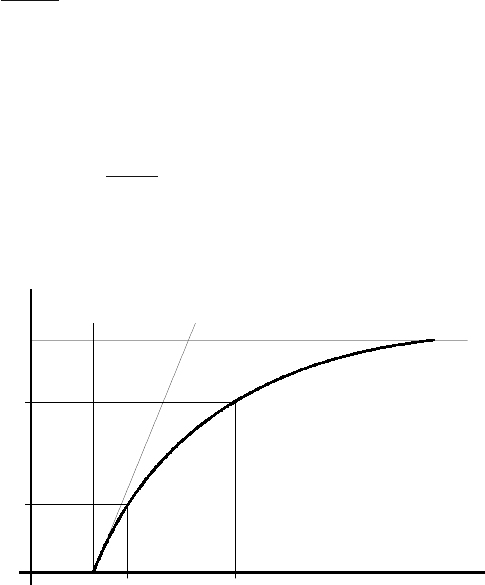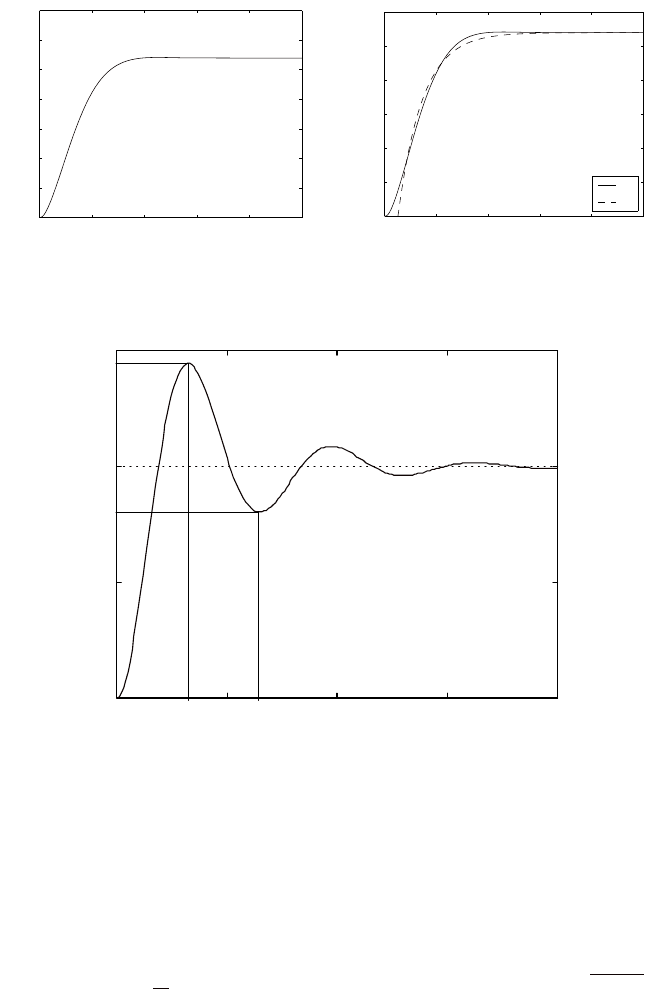Mikles J., Fikar M. Process Modelling, Identification, and Control
Подождите немного. Документ загружается.

218 5 Discrete-Time Process Models
Y. Z. Cypkin. Foundations of Theory of Automatic Systems. Nauka, Moskva,
1977. (in Russian).
Y. Z. Cypkin. Grundlagen der Theorie automatischer Systeme. VEB Verlag
Technik, Berlin, 1981.
E. I. Jury. Digital Control Design. GIFML, Moskva, 1963. (in Russian).
B. Hanuˇs. Introduction to linear discrete control, volume I. ES VS
ˇ
ST, Liberec,
1972. (in Czech).
M.
ˇ
Salamon. Control Theory.ESSV
ˇ
ST, Bratislava, 1979. (in Slovak).
V. Strejc and kol. Control Design with Digital Computers.N
ˇ
CSAV, 1965. (in
Czech).
H. Unbehauen. Regelungstechnik II. Vieweg, Braunschweig/Wiesbaden, 1987.
K. Ogata. Discrete-time control systems. Prentice Hall, Englewood Cliffs,
New Jersey, 1987.
R. Isermann. Digitale Regelsysteme. Springer Verlag, Berlin, 1977.
J. Mikleˇs and V. Hutla. Theory of Automatic Control. Alfa, Bratislava, 1986.
(in Slovak).
J. Lunze. Regelungstechnik 2. Springer Verlag, Berlin, 1997.
5.9 Exercises
Exercise 5.1:
Derive discrete-time state-space model of interacting tanks in series process
shown in Fig. 2.2 on page 17. Consider input variable q
0
and output variable
h
2
. Zero-order hold is assumed.
Exercise 5.2:
Derive discrete-time transfer functions of the process shown in Fig. 2.2. As-
sume zero-order hold.
Exercise 5.3:
Derive state-space model of the system
y(k +2)+3.1y(k +1)+2.2y(k)=u(k)
Exercise 5.4:
Find a general solution y(k) for an input u(k) and a system
−y
1
(k +2)−9y
2
(k +1)+y
1
(k)=u
1
(k)
y
2
(k +1)+3y
2
(k)=u
2
(k)
5.9 Exercises 219
Exercise 5.5:
Find the state transition matrix Φ(T
s
) for the system in Exercise 5.3.
Exercise 5.6:
Find the discrete-time transfer function matrix for the system in Exercise 5.4.

6
Process Identification
Processes in chemical technology can be modelled in various ways. The most
natural representation is based on the state-space description resulting from
material and energy balances. The models mostly used for control purposes
are in form of linear differential or difference equations. We often assume that
their parameters are known and constant. However, in experimental conditions
it is often necessary to measure or estimate parameters from process input and
output signals with carefully chosen input signal types. In this case we will
speak about parameter estimation or system identification.
The first part of the chapter deals with classification of the identification
methods, the mostly used model structures, and guidelines for identification.
The second part is devoted to identification from step responses that is mainly
used to gain some basic information about the process. The third part will dis-
cuss least-squares estimation and its recursive version to identify parameters
of continuous and discrete time systems.
6.1 Introduction
While mathematical models based in mass and energy balances construct
model by the means of analysis, identification strives to describe the process
according the information gained from relation between process inputs and
outputs. Also, analysis methods result mainly in state-space model descrip-
tions, whereas identification produces usually input-output models.
Identification Procedure
A general procedure for process estimation includes the following steps:
Determination of the model structure This often makes use of empirical ex-
perience about the process, or information from some basic experiments.
It is necessary to choose the model type (linear vs. nonlinear), as well
222 6 Process Identification
as its complexity. There are various criteria that can be selected: quality,
flexibility, or the model price. The choice of the structure still remains
more art than a systematic procedure.
Parameter estimation There are lots of procedures for parameter estimation.
It depends on the type and characteristics of the process input, as well as
the desired model structure.
Model verification There are several important aspects at this stage. A suit-
able model should agree with the experimental data, it should describe the
process accurately, and it should meet the purpose it was obtained for.
Further, it can be verified whether the parameters obtained are within
physical limits. It is also possible to reduce the model and compare it
with the original model to see if a simpler model suffices.
Classification of Identification Methods
There are several possibilities to classify identification methods:
A Passive or active experiment identification. This is usually determined
by the given process technology and demands of the experiment. This
indicates whether it is permitted to generate special signals on inputs or
it is just possible to collect typical process inputs and outputs.
B From the point of view of the mathematics, it is possible to distinguish
the following methods:
• deterministic,
• stochastic.
Deterministic methods assume exact knowledge about the process inputs
and outputs and do not consider random sources and influences.
Stochastic methods include for example the least squares method and its
modifications, maximum likelihood method, the Bayesian approach, etc.
Any of these methods assumes some properties of random disturbances
and some knowledge about them (the least demanding from this point of
view are the least squares methods).
Of course, the choice of the method is not arbitrary. It depends on signal
to noise ration, disturbance properties, etc.
C From the processing point of view we can divide the methods into:
• single-shot (batch) methods,
• recursive methods.
Batch methods can further be divided into the manual and computer pro-
cessed. Batch methods are not suitable for computer processing because
it is difficult to make algorithm from them, as they depend on some arbi-
trary performance evaluation (e. g. inflexion point at the step response).
Computer batch methods process some data not suitable for manual cal-
culation (least-squares, numerical integration, calculation of correlation
functions) and are sometimes called off-line methods.

6.1 Introduction 223
Recursive methods process the experimental data gradually and estimated
parameters are improved from each experiment. They can be used in on-
line control of processes and lay foundations for adaptive control.
6.1.1 Models of Linear Dynamic Systems
This section describes basic kinds of linear models employed in identification.
We will distinguish between deterministic, stochastic and continuous, discrete
models.
Deterministic Models
Mostly used are continuous models described by a linear differential equation
with constant coefficients of the form
a
n
d
n
y(t)
dt
n
+ a
n−1
d
n−1
y(t)
dt
n−1
+ ···+ y(t)=b
m
d
m
u(t)
dt
m
+ ···+ b
0
u(t) (6.1)
or
A(p)y(t)=B(p)u(t) (6.2)
A(p)=1+a
1
p + ···+ a
n−1
p
n−1
+ a
n
p
n
(6.3)
B(p)=b
0
+ b
1
p + ···+ b
m−1
p
m−1
+ b
m
p
m
(6.4)
where p =d/dt is the differentiation operator. The identification aim is to
estimate the coefficients of the polynomials A, B for given degrees n, m. Very
often the time delay T
d
is also estimated, hence
A(p)y(t)=B(p)u(t −T
d
) (6.5)
Alternatively, the following equation will be considered in the case of linear
discrete-time deterministic models
y(k)=−a
1
y(k −1) −···−a
n
y(k −n)+b
1
u(k −1)+···+ b
m
u(k −m) (6.6)
or
A(q
−1
)y(k)=B(q
−1
)u(k) (6.7)
A(q
−1
)=1+a
1
q
−1
+ ···+ a
n−1
q
−n+1
+ a
n
q
−n
(6.8)
B(q
−1
)=b
1
q
−1
+ ···+ b
m−1
q
−m+1
+ b
m
q
−m
(6.9)
where q is the shift operator (q
−1
y(k)=y(k − 1)). The identification aim is
again to estimate the coefficients of the polynomials A, B.
Stochastic Models
When stochastic models are considered, we assume a random factor ξ(t)inthe
equation (6.1), or (6.6). Mostly, white noise ξ will be assumed, but also more
complex cases can be discussed. Stochastic models given below are described
in discrete-time.

224 6 Process Identification
ARMA Process
Consider a stationary process v(k) that can be represented as white noise
filtered by a linear process
v(k)=
C(q
−1
)
A(q
−1
)
ξ(k) (6.10)
where
C(q
−1
)=1+c
1
q
−1
+ ···+ c
n
c
q
−n
c
A(q
−1
)=1+a
1
q
−1
+ ···+ a
n
a
q
−n
a
Hence,
v(k)=−a
1
v(k − 1) −···−a
n
a
v(k − n
a
)
+ ξ(k)+c
1
ξ(k − 1) + ···+ c
n
c
ξ(k − n
c
) (6.11)
A(q
−1
)v(k)=C(q
−1
)ξ(k) (6.12)
Stochastic process described by this equation is called ARMA. It can be split
into two parts: AR (autoregressive), when n
c
=0
v(k)+a
1
v(k − 1) + ···+ a
n
a
v(k − n
a
)=ξ(k),Av= ξ (6.13)
and MA (moving average), when n
a
=0
v(k)=ξ(k)+c
1
ξ(k − 1) + ···+ c
n
c
ξ(k − n
c
),v= Cξ (6.14)
ARX Model
It is assumed that the white noise enters directly the process equation
Ay = Bu + ξ (6.15)
y(k)=−a
1
y(k − 1) −···−a
n
a
y(k − n
a
)
+ b
1
u(k − 1) + ···+ b
n
b
u(k − n
b
)+ξ(k) (6.16)
This model is denoted ARX, because AR describes the part A(q)y and X is
an extra input. The special case when n
a
= 0 is called FIR (finite impulse
response) model.
ARX model is due to its simplicity and linearity with respect to identified
parameters most often used in identification.
ARMAX Model
In this model the random source enters the system as MA model, hence
Ay = Bu + Cξ (6.17)
y(k)=−a
1
y(k − 1) −···−a
n
a
y(k − n
a
)
+ b
1
u(k − 1) + ···+ b
n
b
u(k − n
b
)
+ ξ(k)+c
1
ξ(k − 1) + ···+ c
n
c
ξ(k − n
c
) (6.18)

6.2 Identification from Step Responses 225
Frequently a modification of ARMAX model is used, the so called ARI-
MAX (ARMAX Integrated) or CARIMA (Controlled ARIMA) model. In this
case a nonstationary disturbance is assumed when the white noise is filtered
by an integrator
Ay = Bu +
C
Δ
e (6.19)
where Δ = 1 −q
−1
corresponds to the discrete integrator.
Output Error Model
The white noise is added to the output variable (measurement error)
y =
B
A
u + ξ (6.20)
w(k)=−a
1
w(k − 1) −···−a
n
a
w(k − n
a
)
+ b
1
u(k − 1) + ···+ b
n
b
u(k − n
b
) (6.21)
y(k)=w(k)+ξ(k) (6.22)
6.2 Identification from Step Responses
The broad variety of methods based on step response identification belong to
deterministic methods as the input signal is deterministic and random sources
are not considered in the process description. The results of the identification
are coefficients of the equation (6.5). Methods in this category aim at first es-
timates of the process and provide information about an approximate process
gain, dominant time constant, and time delay.
The input signal used is a step change of one of the process inputs when
all other inputs are held constant. It is necessary that the controlled process
is in a steady state before the step change. The measured process response is
a real step response that needs to be further normalised for unit step change
and for zero initial conditions.
As the identified process can in general be nonlinear, it might be advan-
tageous to record several step responses with different step changes and signs
of the input signals. To obtain the normalised step response, the following
formula can then be used
ˆy
i
=
N
k=1
Δu
k
y
ik
N
k=1
(Δu
k
)
2
(6.23)

226 6 Process Identification
where i is ith point of the step response,
k - kth measurement, k =1,...,N,
Δu
k
- step change of the input at the kth measurement,
y
ik
- output value at the kth measurement in ith interval,
ˆy
i
- final value of the step response in time i.
6.2.1 First Order System
Consider a first order approximation of the identified process
G(s)=
Z
Ts+1
e
−T
d
s
(6.24)
where Z is the process gain, T time constant, and T
d
time delay that need to
be determined. The step response corresponding to this transfer function can
be obtained via the inverse Laplace transform of the output as
y(t)=
⎧
⎪
⎪
⎨
⎪
⎪
⎩
0 t<T
d
Z
⎛
⎝
1 −e
−
t −T
d
T
⎞
⎠
t ≥ T
d
(6.25)
r
r
t
t
2
t
1
y
1
y
2
Z
T
T
d
Fig. 6.1. Step response of the first order system
We assume the normalised step response. The process static gain is given
as the new steady-state output Z = y(∞) because the normalised input is the
unit step change (Fig. 6.1). If we assume that two points t
1
,y
1
and t
2
,y
2
from
the step response are known then it follows from (6.25)

6.2 Identification from Step Responses 227
y
1
= Z
⎛
⎝
1 −e
−
t
1
− T
d
T
⎞
⎠
(6.26)
y
2
= Z
⎛
⎝
1 −e
−
t
2
− T
d
T
⎞
⎠
(6.27)
After some simple manipulations we get
T =
t
2
− t
1
ln
Z−y
1
Z−y
2
(6.28)
T
d
=
t
2
x −t
1
x −1
,x=
ln
Z−y
1
Z
ln
Z−y
2
Z
(6.29)
The value of the time constant T can also be obtained from the step response
as it is shown in Fig. 6.1, or as the time when the output reaches 63% from
its new steady state.
Example 6.1: Approximation with the first order system
www
Consider step response of dimensionless deviation output concentration
x
1
in a CSTR to step change of Δq
c
= 10 shown in Fig. 6.2. To obtain
the normalised step response, the original one was divided by the step
change value and shown in Fig. 6.2 (right) by a solid line. Two points were
chosen: [0.85; 0.0082] and [2.18; 0.0224]. The process gain was obtained as
Z =0.027 from y(∞). From the points t
1
,y
1
and t
2
,y
2
were calculated
the time constant T =0.94 and the time delay T
d
=0.51. The resulting
transfer function is then of the form
G(s)=
0.027
0.94s +1
e
−0.51s
The approximated step response is shown in the same figure as the vari-
able x
n
1
by a dashed line. Both curves coincide at the measured points.
However, there are significant discrepancies elsewhere. We can see that
this procedure serves only for a crude estimate of process parameters.
6.2.2 Underdamped Second Order System
If the process step response exhibits underdamped behaviour (Fig. 6.3) it is
possible to approximate it by a second order system with a transfer function
of the form
G(s)=
Z
T
2
s
2
+2Tζs+1
=
Zω
2
0
s
2
+2ω
0
ζs + ω
2
0
(6.30)
The identification task is to determine the process gain Z, natural fre-
quency ω
0
, time constant T =1/ω
0
, and damping ζ. Given are points [t
1
,y
1
],
[t
2
,y
2
] and the steady state output y(∞).

228 6 Process Identification
0 2 4 6 8 10
0
0.05
0.1
0.15
0.2
0.25
0.3
0.35
x
1
t
0 2 4 6 8 10
0
0.005
0.01
0.015
0.02
0.025
0.03
+
+
x
1
t
x
1
x
1
n
Fig. 6.2. Measured step response of a chemical reactor using the input change
Δu = 10 (left), approximation of step response by the first order step response
(right)
1
t
2
t
Z
y
1
y
2
t
Fig. 6.3. Step response of the second order underdamped system
For the derivation of relations between the known and estimated variables
we will use the fact that the derivative of the step response with respect to
times is in the points t
n
(local extrema) zero.
The process static gain is as in the previous case given as the new steady-
state value of the process output Z = y(∞).
The step response is of the form (see the Laplace transform table)
y(t)=Z
1 −
1
P
e
−ζω
0
t
sin(ω
0
Pt+ ϕ)
,ϕ= arccos ζ, P =
1 −ζ
2
(6.31)
The derivative of y(t) with respect to time is given as
